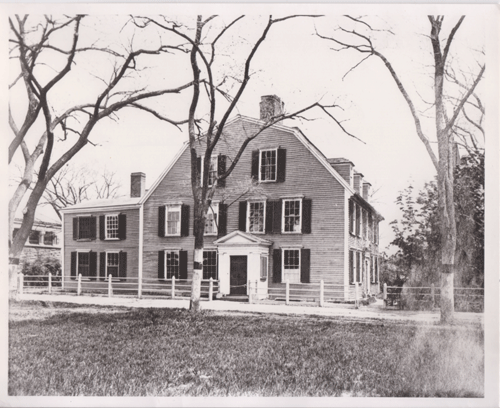Or rather, the undergraduates and faculty (at least the tutors, the younger ones who habitually dined with the undergraduates) were in agreement about the butter supplied by steward Jonathan Hastings. It was bad.
The controversy was over how far the students had gone to protest that situation. The faculty objected to the boys:
- complaining in the dining hall, possibly using the word “stinketh.”
- gathering in a large group to plan actions, or what the college laws called a “combination.”
- walking out of the dining hall en masse before being dismissed with prayer.
Daniel Johnson, the senior who was one of the leaders of the protest, refused to do that. And almost the whole student body showed up at the president’s house to support Johnson.
During evening prayers on 26 September, Holyoke threw all his authority behind the demand that the undergraduates sign an acknowledgment of wrongdoing written by the faculty. As Johnson had predicted, the student body stood firm against doing that.
On 4 October, Holyoke and the tutors endorsed a report on the situation written by Prof. Samuel Wigglesworth. They sent that to the Harvard Corporation, which met three days later, alongside the Harvard Board of Trustees. The latter group included Gov. Francis Bernard, Lt. Gov. Thomas Hutchinson, provincial treasurer Harrison Gray, and several impressive clergymen.
Those gentlemen considered “the present uncomfortable state of the College” and came down firmly on the side of the administration. Both bodies said the students’ action was “irregular & disorderly in an high Degree” while the faculty response was “mild & gentle.” As for the students’ threat to withdraw as a mass protest, the boards resolved:
That if any Scholar shall leave the College in persuance of the Combinations enter’d into as afforesd. or shall go out of the Town of Cambridge wtḥout Leave, before ye Fall vacation which will begin on Wednesday the fifteenth Instant, every Scholar so offending shall be adjudged to have renounc’d his Relation to the College & shall not be again rec’d. into it, wtḥ out a Vote of the Presdt. Professrs. & Tutors.The overseers agreed to act together (in what might otherwise be called a combination) by attending the chapel service when President Holyoke read all those resolutions. Surely that show of authority would cow the student body into agreeing “to sign a full & ample Confession of their Crimes.”
Instead, the students submitted a defense of their actions more than 1,500 words long. It was signed by seven undergraduates as a “College Committee”—four seniors plus one representative from each of the other classes. The first signatory was senior Thomas Bernard, son of the governor.
Incidentally, other prominent men who had sons at Harvard at this time included Lt. Gov. Hutchinson, colony secretary Andrew Oliver, new clerk of the legislature Samuel Adams, and Prof. John Winthrop. Even steward Hastings had a son in the college, though he was staying out of the protest.
The students’ defense repeated how their protest against the butter was the only way they could be heard, expressing gratitude that the faculty had finally done something about that shared problem. As for the charge of being “disorderly in an high Degree,” they emphasized their group discipline: in visiting President Holyoke, “we formed ourselves into regular Ranks, & marched in a Body to his House,” showing “remarkable good Order.” That quasi-military behavior was similar to the 5 Nov 1765 anti-Stamp Act march in Boston, and to the rural court closings of 1774.
The Board of Overseers gathered again on 10 October, with only five days left before the fall vacation.
TOMORROW: The opposition melts.
(The photo above shows steward Jonathan Hastings’s house, which stood near Harvard Yard in an area now used by the Harvard Law School. It became the headquarters of the provincial army in April 1775.)

No comments:
Post a Comment